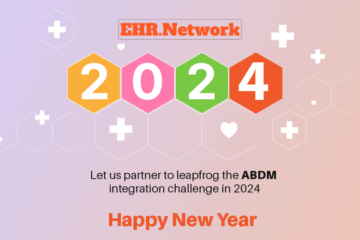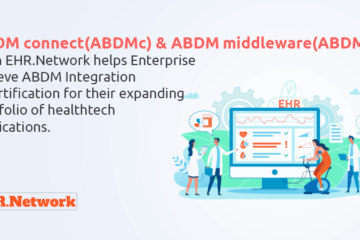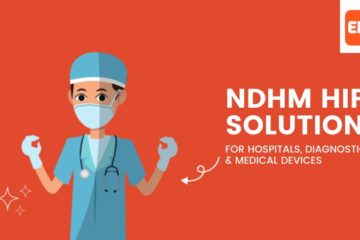ABDM connect(ABDMc) & ABDM middleware(ABDMmw) from EHR.Network helps Enterprise achieve ABDM Integration & certification for their expanding portfolio of healthtech applications.

A fast growing Digital Healthcare Enterprise, catering to the Indian market, successfully completed M1 & M2 certification deploying ABDM Connect(ABDMc) along with the ABDM middleware(ABDMmw) in the ABDM middleware integrated mode. This digital health enterprise has a fast growing portfolio of healthtech applications and wanted the ABDM integration to be at the enterprise level to cater to their planned growth in the near future.
This portfolio of healthtech applications are deployed as standalone silos. The health data structure of each application is driven and persisted to meet its specific need. There is a business driver for the Enterprise to integrate all applications with the ABDM network. Hence an enterprise-wide unified ABDM integration solution was required.
The solution required an approach where multiple disparate application data silos could be integrated with ABDM without impacting the current architecture and functionality of the individual solutions.
ABDM integration – key aspects
ABDM integration of any health system can be grouped under three major heads – M1, M2 and M3. It requires the management of Patient’s ABDM profile, clinical Data both for sharing & that received from the remote health systems, careContexts and consents. A traditional approach would require major updates and enhancements to each integrating application. However through deployment of ABDM Middleware in conjunction with ABDM Connect, we could achieve an enterprise level unified ABDM integration was possible without any changes to the applications and with minimal disruption to the business.
Milestone 1(M1) focuses on creation and verification of ABHA number and ABHA address for patients. Further, the ABHA profile, that is shared with the health system in M1, is to be managed for subsequent integration flows. Since patients can be common across applications, a centralized repository to manage their ABHA profiles across the enterprise was considered ideal. ABDM Middleware with its FHIR repository covered this requirement.
Milestone 2(M2) implements the Health Information Provider(HIP) functionality of ABDM. The key parts of this milestone are the discovery and listing of patient’s health data, control flows to gather patient consent and sharing of clinical data based on patient consent.
The health applications are expected to group Patients’ clinical data as CareContexts so that they can be discovered and listed by the ABDM Consent Managers(CM). While ABDMc implemented the apis that are used by the CM, ABDMmw provided the unified careContext and EHR services for all the applications.
ABDMc provided functionality for consent gathering, management and data sharing related functionality such as FHIR bundle creation & encryption. Since all of this was managed with practically no involvement of the applications, the process could be completed without any disruption.
ABDMc used the EHR & careContext services of the ABDMmw to identify the data to share with other third party applications as per patient consent. The applications in turn populated the middleware with the required data for sharing. This was policy driven by each application so as to create minimal disruption to their business.
A hybrid approach involving both FHIR and openEHR repositories was used in the ABDMmw so as to harness the strengths of both these complementing standards.
At the time of writing this use case functional certification for M1 and M2 are complete for the Enterprise and WASA is in progress.
The Enterprise has benefited from use of ABDMmw in conjunction with ABDMc from EHR.Network through:
- A unified approach for ABDM integration for their disparate healthtech applications
- No functional impact to their existing application workflows for ABDM integration
- Separate data layer for ABDM integration, this increased robustness and integrity of the data
- Taking the first steps to a data first approach in their healthtech solution portfolio
- Experience in working with ABDMmw as a limited scope unified data repository can be leveraged to upgrade ABDMmw to EHR.Network Data-first platform for supporting new age innovative application development and deployment for the Enterprise
- Domain knowledge of standard compliance and structured clinical data creation from EHR.Network team
- ABDM integration and certification support from EHR.Network



0 Comments